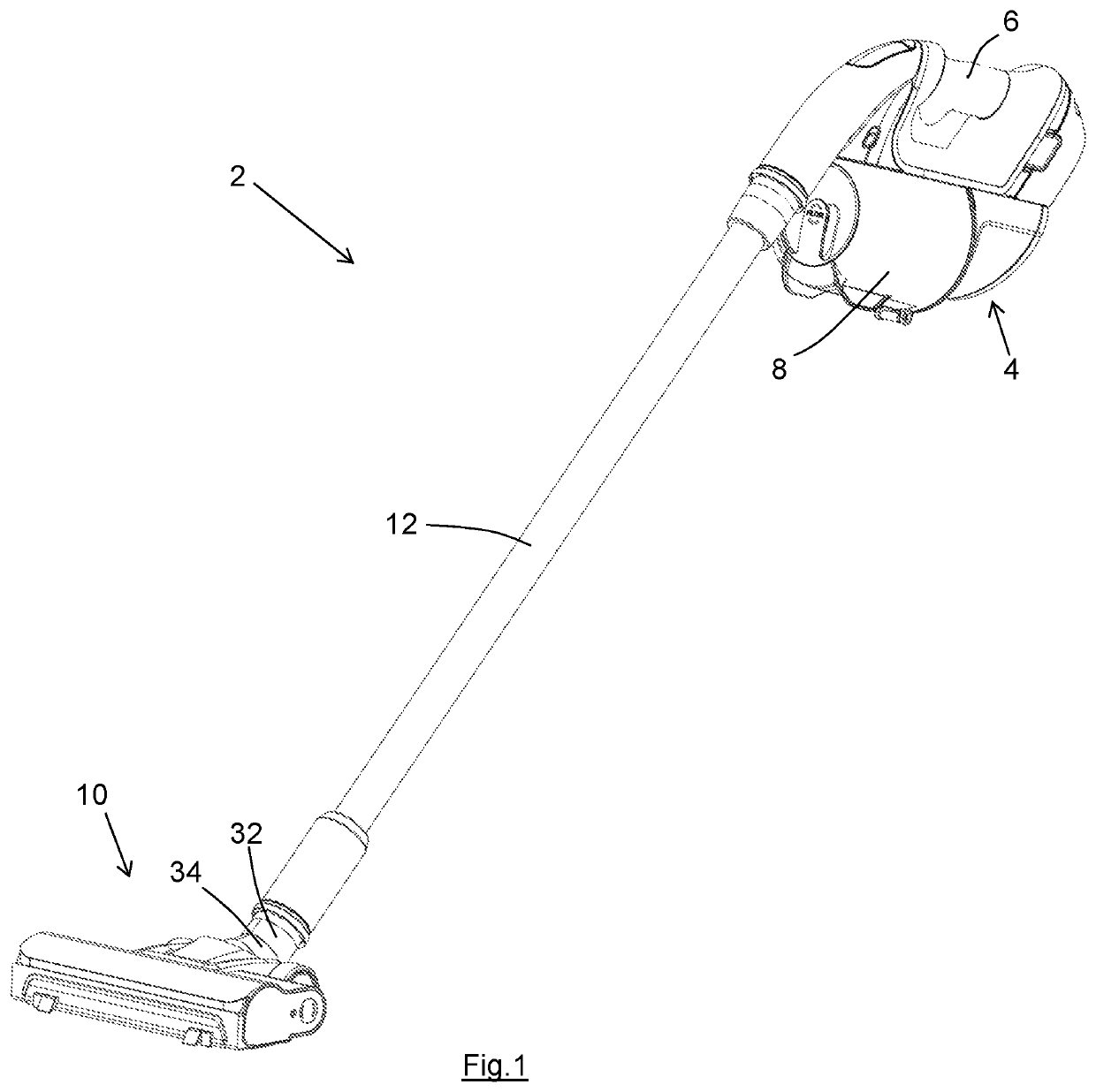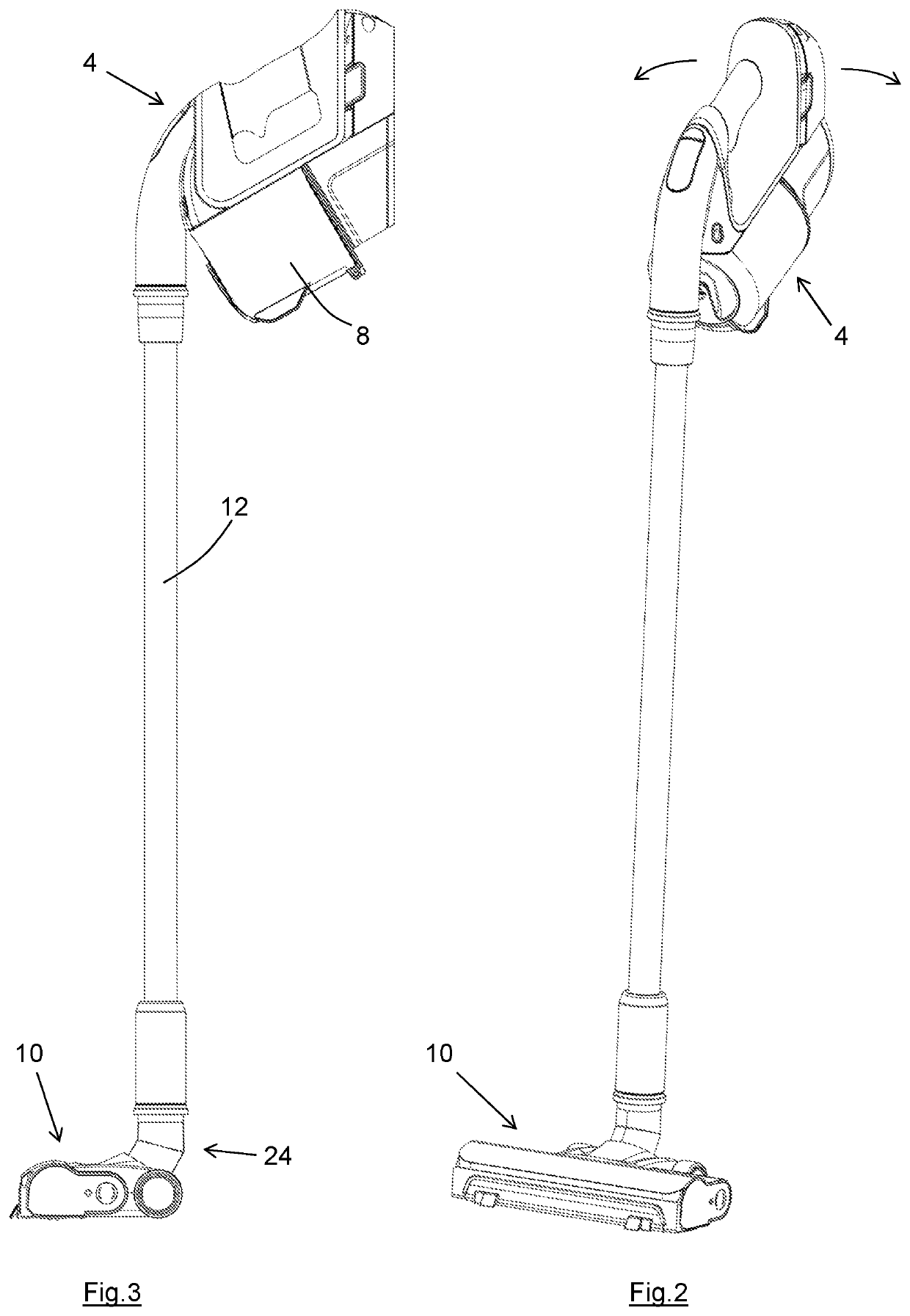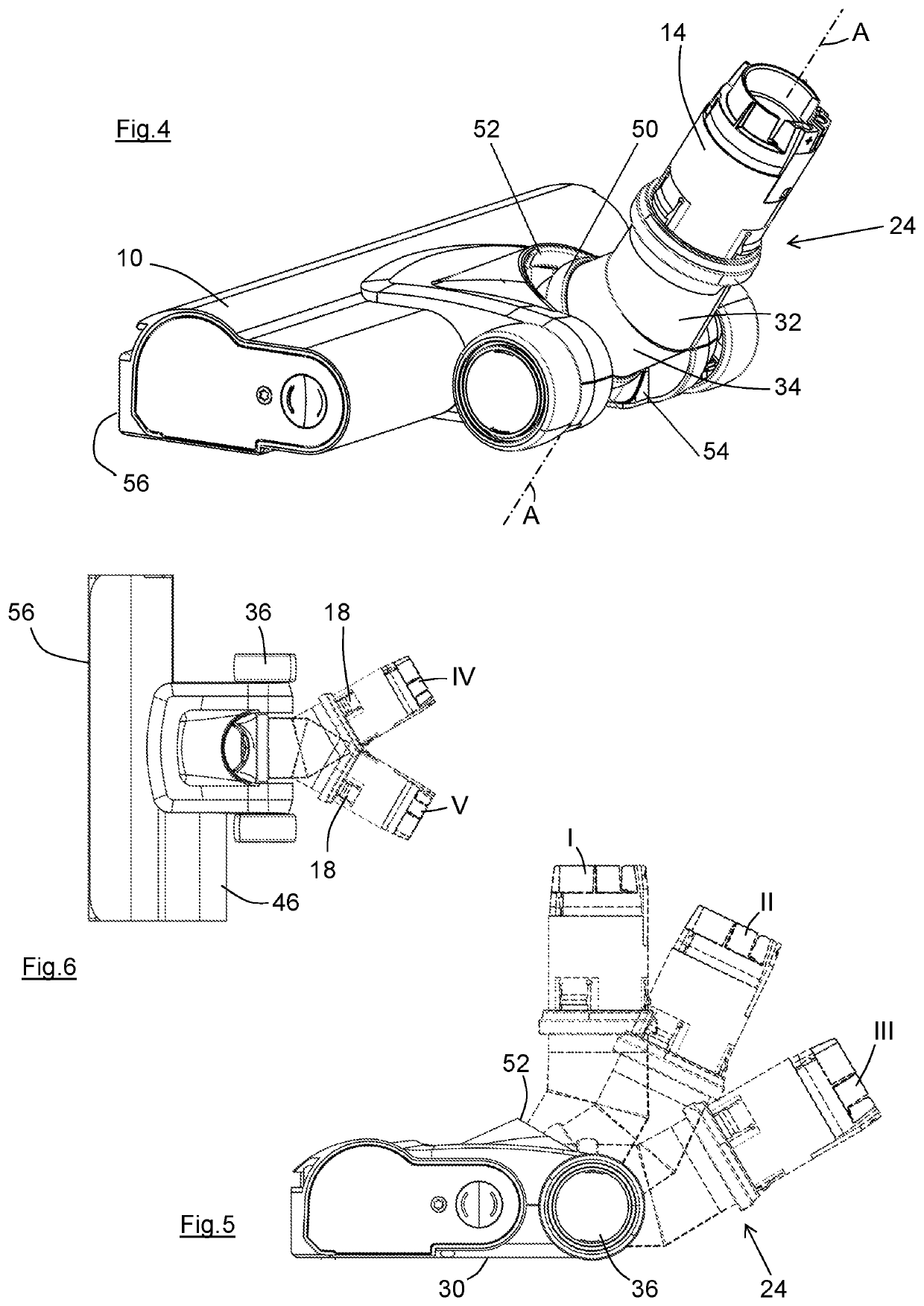Cleaning head for a vacuum cleaner
a cleaning head and vacuum cleaner technology, applied in the direction of cleaning equipment, suction hoses, suction nozzles, etc., can solve the problems of affecting the cleaning experience of users, so as to improve the cleaning experience for users, increase the stability of the vacuum cleaner, and minimise the uncontrolled twisting movement of the cleaning
- Summary
- Abstract
- Description
- Claims
- Application Information
AI Technical Summary
Benefits of technology
Problems solved by technology
Method used
Image
Examples
Embodiment Construction
[0042]The invention will now be described in more detail, by way of example, with reference to the accompanying drawings, in which:
[0043]FIG. 1 shows a perspective view of a stick vacuum cleaner in a position of use, the stick vacuum cleaner having a cleaning head according to the present invention;
[0044]FIG. 2 shows a perspective view of the stick vacuum cleaner of FIG. 1 in a storage position;
[0045]FIG. 3 shows a side view of the stick vacuum cleaner in its storage position;
[0046]FIG. 4 shows a perspective view of the cleaning head of the stick vacuum cleaner of FIG. 1;
[0047]FIG. 5 shows a side view of the cleaning head of FIG. 4 with the rotatable section of the steering joint shown in dotted outline in three of its available pivoted positions relative to the cleaning head;
[0048]FIG. 6 shows a plan view of the cleaning head of FIG. 4 with the rotatable section shown in dotted outline in two of its available rotated positions relative to the cleaning head;
[0049]FIG. 7 shows a side...
PUM
 Login to View More
Login to View More Abstract
Description
Claims
Application Information
 Login to View More
Login to View More - R&D
- Intellectual Property
- Life Sciences
- Materials
- Tech Scout
- Unparalleled Data Quality
- Higher Quality Content
- 60% Fewer Hallucinations
Browse by: Latest US Patents, China's latest patents, Technical Efficacy Thesaurus, Application Domain, Technology Topic, Popular Technical Reports.
© 2025 PatSnap. All rights reserved.Legal|Privacy policy|Modern Slavery Act Transparency Statement|Sitemap|About US| Contact US: help@patsnap.com



